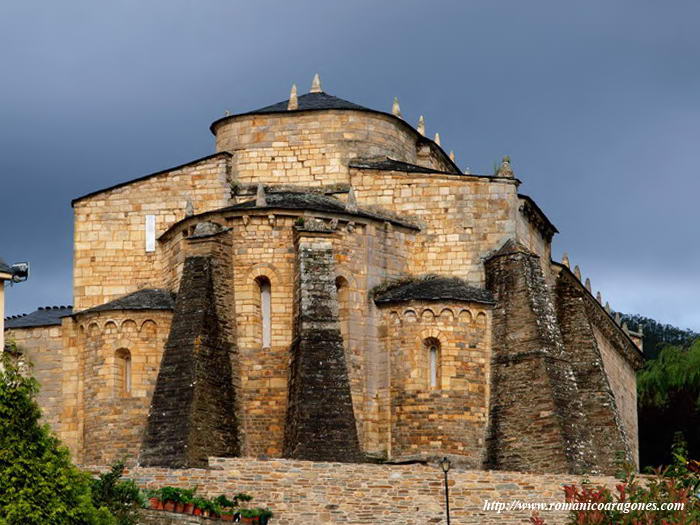Spania in the IX early Century
4. Reccared I the Conqueror (819-851)
Reccared I ruled for almost 32 years and his reign is usually dated from 24 April 819 to 11 March 851, from the age of twenty-six and until his death at age fifty-eight. He is considered a military genius by historians, and an avid expansionist ruler. He turned Spania into an international superpower by creating an empire that stretched from the Atlantic Ocean to the Danube, even if some of those conquests were only temporary. He was also a great propagandist who wrote endlessly about his conquests and reign.
Once the civil war was over, he launched his first campaign. In 820 he mustered his army and advanced towards Barcino, passing through the fortress of Tarraco (1) in August. One month later, he marched his troops through the plain close to Vicus Ausonae (2), where he won the largest battle of all of his campaigns, crushing the combined forces of Barcino and its Tolosan allies. The size of the two armies is difficult to determine, but both hosts were around 10,000 men. Most scholars believe that the Visigothic army was more numerous. According to Reccared's chronicle, the battle occurred on 29 September 820. After victory in battle, his troops stopped to plunder the enemy the camp and the enemy to was able to escape to Barcino. Reccared was thus forced to besiege the city, but he finally conquered it after a siege of seven months.
This campaign drastically changed the political situation in Spania and in Frankia. By taking Barcino, Reccared regained control of all of northern Spain and, with the destruction of the army of the Tolosan duke, Berengar, called the Wise, he forced him to send tribute and their own sons as hostages to Spania and, at the same time, broke the balance of the already shaken Frankish kingdom. Meanwhile, the Frankish king, Louis the Pious, died when he returned of a failed expedition to the rebellious Burgundy (822). His sons fought then for the crown and the succesion strife (823-826) became mixed with the ongoing civil war (817-826). Both ended with the Treaty of Metz (827), which split the Frankish realm into three parts, to become the kernels of France, that went to his youngest son, Charles, and Germany, for his eldest son, Louis the German, with Burgundy between them.
Reccared I turned then his attention to North Africa. As he has been fighting with the rebels of Barcino, the Eastern shores of Spania, the Ballearic islands and even the Italian península has suffered several Muslim raids. Thus, Reccared decided to attack North Africa to destroy those pirates. In 825 he crossed the Strait and took two cities, Septem (3) and Tamlilt (4), which was garrisoned by the king before he moved inland and took the old city of Icosium (5). Unlike previous plundering raids, Reccared I garrisoned the area, too. This permitted him to ship supplies and troops between Spania and North Africa. Thus, in 827, he used Icosium for a naval transportation of troops directly to Banzart (6). Once the city was secured, he advanced along the coast, pillaging on the way, until he reached Takapes (7). There he embarked again and returned to Spania. After this two campaigns, with their cities desperately impoverished and with their economies in ruins, no Muslim governor would threaten the shores of Spania for a long time.
It was around this time when Reccared moved the capital from Toletum (8) to Reccopolis (9). From there he embarked himself in a program of construction of great buildings. During his life he constructed over 10 churches and the first cathedral of Spain, which he built in Reccopolis. His reign included the improvement and enhacement of the road system and a period of great stylistic changes in the sculpture, paintings and reliefs.
The Primate Cathedral of Saint Mary of Reccopolis
Reccared's next target was the last Lombard state, the principality of Benevento, which was fighting against the Saracens and Leo, duke of Naples When his princeps, Sicard, was assasinated in 830 and two factions fought for power in Benevento, crippling the principality and making it susceptible to external enemies. Reccared sailed directly to Salernum in April 831. After taking the city by surprise, he proceeded south with the usual raiding and pillaging. Undefended, Salerno opened her gates to Reccared. In August he turned north, towards Capua, which he took in November. It appears that the Lombards lords were not expecting an invasion, so they were not ready to defend against Reccared, who was only stopped by the walls of Benevento.
Reccared returned to Italy in 835 but this appears to have been just a raid of the area of the duchy of Calabria. The plunder recorded is minimal, so it was probably just a minor raid. On the following year his next campaign was more intense. Radelcis, the new prince of Benevento, raised a large army and engaged the Visigoths around Consa. Even if Reccared boasted in his chronicle that he had crushed the enemy, the small amount of plunder taken and the fact that he left the peninsula soon atfer indicate that his victory was not as important has he claimed. However, as he did receive tribute from Radelcis after that campaign, it is obvious that the outcome of the battle was in Reccared's favor.
He would raid Calabria and Benevento in 838, and would return to Italy in 841 to put down some rebellions and crushed again the army of Radelcis in a big battle in 842. However, this victory was neither complete nor permanent since Benevento did not remained aligned to Spania for too long after Reccared's death.
(1) present day Tarragona
(2) Vic
(3) Ceuta
(4) Melilla
(5) Alger
(6) Bizerte
(7) Gàbes
(8) Toledo
(9) Reccopolis was one of the four cities founded by the Visigoths in Hispania (578 -OTL-). It was located in the province of Guadalajara, in Castile-La Mancha.




